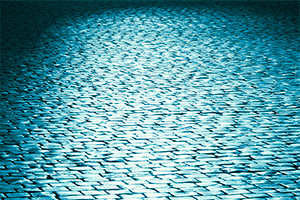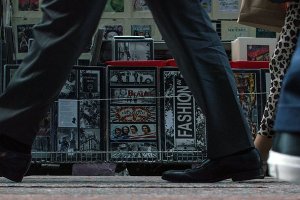We’d like to welcome Todd Cherches to the blog. As a co-founder of the BigBlueGumball training firm, he has a lot to say about ways to help your career through the power of visual thinking and learning. In his first post, he shows a simple tool you can create to help your job application break through the sea of text that floods hiring managers’ and recruiters’ in-boxes.
As we all know, the traditional resume is an important and essential part of the job search process — a way to efficiently tell your career history on a sheet of paper or two.
But after a hiring manager has sorted through thousands of resumes and interviewed hundreds of candidates, your text-based black and white resume can easily get lost in the crowd and buried in the pile (“I forget… who’s the guy who used to work for Disney and CBS?”).
This is why I recommend that you consider creating a visual bio or visual resume, a colorful, image-based version of your text resume. It’s a personal branding and marketing piece that you can take along on your interview, use as a visual roadmap to tell your story, and then leave behind. It will give you an opportunity to demonstrate your creativity and help you stand out from the crowd.
Those in more creative jobs, such as design, animation, and art direction, are more likely than others to incorporate visual elements into their resumes or bios, but just about anyone can find new ways to infuse a job search with a dose of innovation and creativity.
For years I’ve used versions of the visual bio shown here (click it for an enlarged version). I typically bring it along on an interview and wait for the right moment to bring it out.
Typically, when an interviewer asks something like, “So, walk me through your job history,” or “Tell me about what you did when you lived out in L.A.,” it prompts me to say “Well, let me take you through it” and take out my visual resume.
The initial reaction tends to be, “What is this?” But a few seconds later I get reactions like “Wow, this is really cool!” or specific questions about my career. Using it puts me more at ease and makes me feel more confident as I continue the interview.
Having this visual representation of your job history right in front of you will help prompt your own memory, assist you in remembering some of your key talking points, and enable you to more effectively bring your career past to life through more effective storytelling.
For even more innovative examples of what’s possible, along with some eye-popping illustrations, check out a recent blog post on InspirationFeed, 30 Amazingly Creative Examples of Designer Resumes.
This thought-provoking article also provides some valuable resume do’s and don’ts, along with some other tips that may trigger some new ideas and approaches in your job search.
Keep in mind that these visual resumes and bios are not necessarily intended to take the place of your traditional resume — although they can, depending on the type of position and industry you’re in (you have to know your audience). They are a terrific, innovative marketing tool that will support your job search in a memorable way that lets you demonstrate your creativity.


